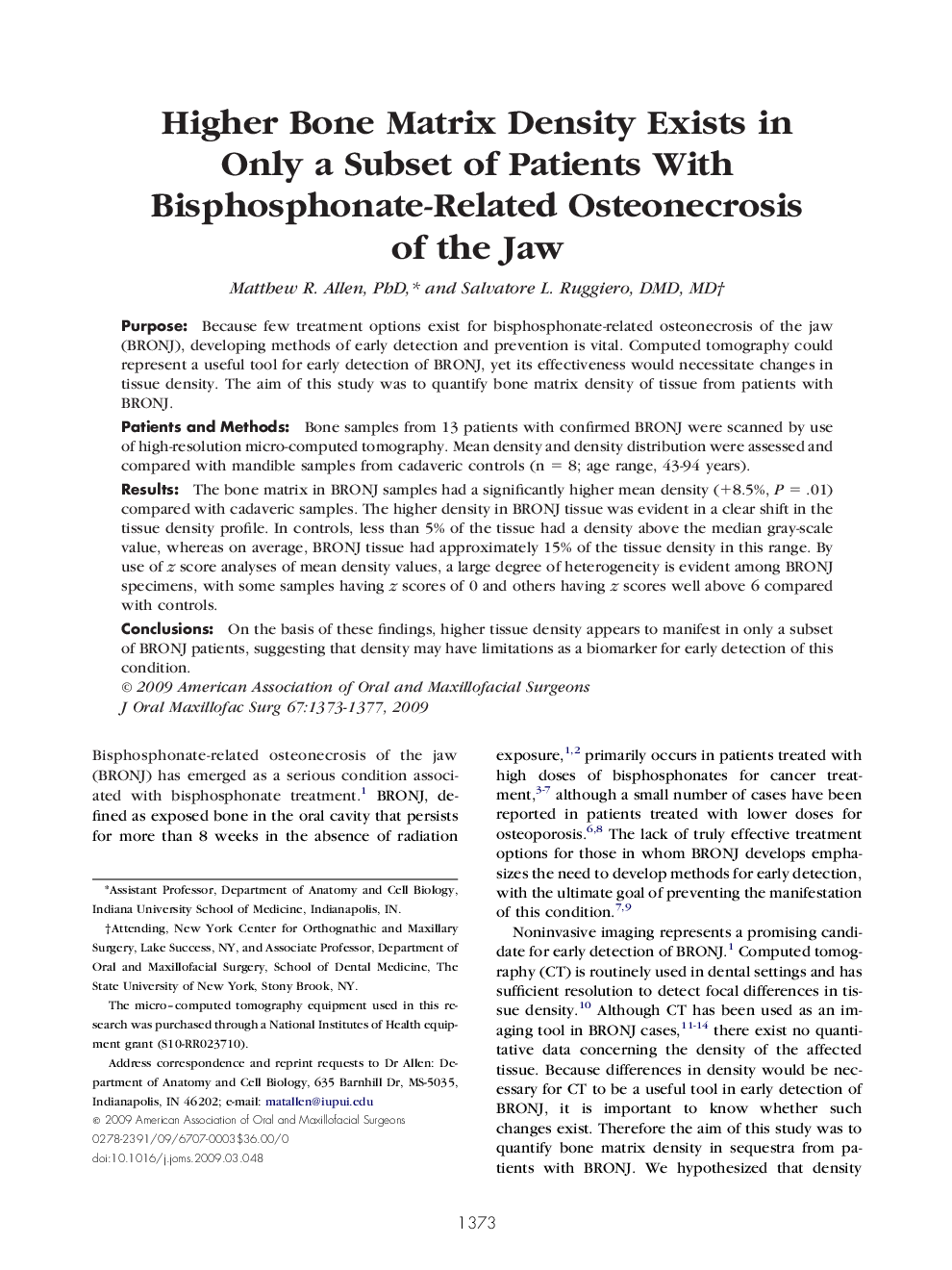| Article ID | Journal | Published Year | Pages | File Type |
|---|---|---|---|---|
| 3158473 | Journal of Oral and Maxillofacial Surgery | 2009 | 5 Pages |
PurposeBecause few treatment options exist for bisphosphonate-related osteonecrosis of the jaw (BRONJ), developing methods of early detection and prevention is vital. Computed tomography could represent a useful tool for early detection of BRONJ, yet its effectiveness would necessitate changes in tissue density. The aim of this study was to quantify bone matrix density of tissue from patients with BRONJ.Patients and MethodsBone samples from 13 patients with confirmed BRONJ were scanned by use of high-resolution micro-computed tomography. Mean density and density distribution were assessed and compared with mandible samples from cadaveric controls (n = 8; age range, 43-94 years).ResultsThe bone matrix in BRONJ samples had a significantly higher mean density (+8.5%, P = .01) compared with cadaveric samples. The higher density in BRONJ tissue was evident in a clear shift in the tissue density profile. In controls, less than 5% of the tissue had a density above the median gray-scale value, whereas on average, BRONJ tissue had approximately 15% of the tissue density in this range. By use of z score analyses of mean density values, a large degree of heterogeneity is evident among BRONJ specimens, with some samples having z scores of 0 and others having z scores well above 6 compared with controls.ConclusionsOn the basis of these findings, higher tissue density appears to manifest in only a subset of BRONJ patients, suggesting that density may have limitations as a biomarker for early detection of this condition.
